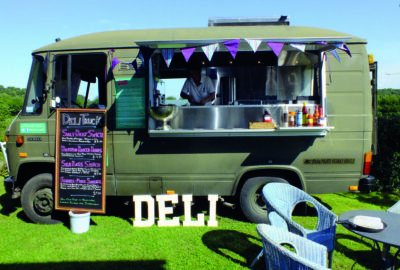Reducing the carbon footprint of hospital menus
A low carbon recipe bank, appetite enhancing crockery and introducing venison on menus are some of the initiatives being introduced at NHS hospitals to help manage their carbon footprint.
The Recipe Bank
Comprising 300 recipes, was launched earlier in the year with all recipes analysed by a national dietician to ensure they are suitable for NHS patients. Each recipe has a carbon rating – for example, lentil and beef burger is CO2 rating B.
The recipe bank not only includes plant-based meals, but also chicken, salmon, venison and beef. In his presentation at the Hospital Caterers’ Association (HCA) Forum, Tim Radcliffe, Net Zero Food Programme Manager, NHS England, said, “The beef dishes have been adapted – for example, one lasagne recipe shows how you can use 50% of the beef required and add lentils to it, which reduces the carbon footprint and makes it more healthy.”
Using Venison
NHS Trusts are being encouraged to use more venison on the menu due to its lower carbon footprint and cost. On average, 185m meals are produced a year in NHS hospitals and according to The Waste and Resources Action Programme, an estimated 20% are wasted. As from April this year, all NHS Trusts have been asked to split food waste and measure it in four different ways – plate waste, unserved meals, production waste and spoilage. Tim says, “As a result, we will have a more accurate picture of exactly how food is wasted. We’re never going to get to zero food waste. In a hospital, a patient may order a meal and then a few hours later can’t eat it due to several reasons such as medication or an emergency operation. What we need to look at is how we can reduce avoidable food waste.”
Enhancing Crockery
Another initiative to reduce food waste is appetite enhancing crockery. Traditionally the NHS has used grey-looking plates with a stripe down the side. Studies have shown how coloured crockery enhances patients’ appetite. Dishes such as cauliflower cheese or mashed potato on a grey plate may look unappetising or not easily seen. Trials using blue crockery have been successful with Solent NHS Trust reducing food waste by 29% and increasing the number of empty plates by 14%. Tim says “Blue was chosen because it’s the last colour to go on the dementia spectrum. The new plates are restaurant quality, more robust and look appealing to the patient, with the food standing out on the plate.” Several NHS Trusts are already in the process of changing over to blue crockery as a result of the trial.
Top tips for reducing your menu’s carbon footprint
- Carry out a comprehensive audit of the menu and identify dishes that are carbon intensive and high-cost items such as beef, then look at alternatives.
- Put plant-based options at the top of the menu. Don’t use the words “vegan” or “vegetarian” as this may put someone off who thinks they can’t eat the meal as they’re not vegan whereas it’s a great dish which anyone can eat.
- Often there are little things you can do – one NHS Trust is considering replacing mayonnaise with vegan mayonnaise as it has a reduced carbon footprint.
- Seasonality is important – buying an item in season will be lower in cost and have a reduced carbon footprint. For example, out of season strawberries have a footprint seven times higher than tastier seasonal ones.



